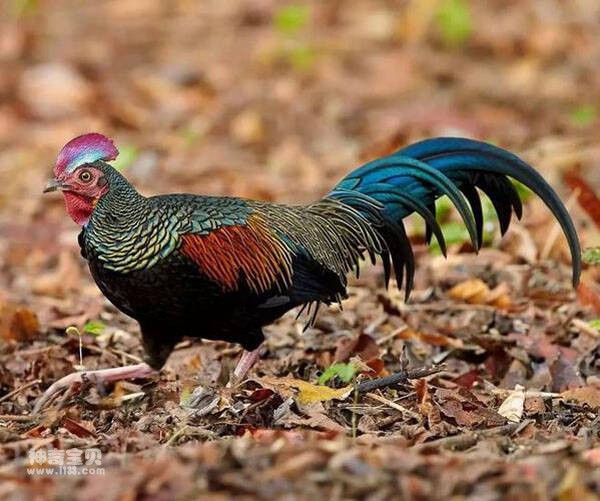Gallus varius
IUCN
LCBasic Information
Scientific classification
- name:Gallus varius
- Scientific Name:Gallus varius,Green Junglefowl
- Outline:Landfowl
- Family:Gallinomorpha P.family Protogallinus
Vital signs
- length:About 70 cm
- Weight:454-795g
- lifetime:No textual research information is available
Feature
The top of the head is mainly light blue, turning purple at the peak
Distribution and Habitat
It is found in Indonesia, including the islands of Java, Bali, Komodo, Lombok, Sumbawa and surrounding small islands. Introduced: Cocos (Keeling) Islands.
Green roosters live in Java, but not in the central and western regions. The habitat is in coastal areas and semi-arid rocky areas, close enough to water sources. It lives in areas bordering swamps, mangroves, coastal beaches, rice fields, and underground Marine caves. As long as food can be found. They can travel short distances from island to island on any cliff or rock, in fast, strong currents and harsh wind conditions.
Appearance
The green fowl is 70 cm long and weighs 454-795 grams. Both sexes are dimorphic, with male feathers mainly green and black in color, very different from females. It is easily distinguishable from other wild male chickens. This pheasant does have a lot of unique features: a three-colored fleshy patch under the throat, a crest with a notch, and almost square feathers. The top of the head is mainly light blue, turning purple at the peak. At the same time, the surface of the feathers is purple red, two blue, and yellow near the throat. The light green feathers of the neckline form a beautiful harmony with the copper color. Keep the tail fairly low.
The female is brown in colour and has no crown. Sometimes, some green dense feathers will appear overprinted and give their feathers a scaly appearance. The light brown underbody is interspersed with green feathers.
Details
The Green fowl (Gallus varius) is a foreign name, Green Junglefowl, without subspecies.

Green roosters live not far from the coast and valley of the sea, rice fields and the surrounding dry rocky jungle. Standing in the bush all day, leaving only in the morning and at night. In pairs or small groups of about five, they forage in a poultry-like manner, skimming over roadsides and roads to swallow any food they may find. The groups were led by a male rooster, who guided them to a drinking point each morning. When confronted with danger, the chicken head will be vigilant in advance to bring them back to the safety of the forest cover. At night, they roost between bamboos, 4-6 meters above the ground. Without a flock, the males live alone until breeding season, when they are flapping their wings wildly and chirping vigorously, and the males are up to the challenge. The male can then compete with other males for mating rights.
The green root-chicken's diet is diverse, including plant seeds, young grass, young shoots of trees, tubers, berries, bamboo shoots; They also eat insects and small reptiles.

In the wild, green roosters are monogamous for life, and their parents remain close to their young for many years. Male chickens in Java reach sexual maturity within two years. Male chickens perform a dance when they pursue a female, rubbing and flapping their wings with their feet to make a sound, rotating around the chosen female and keeping their wings down. The nesting season occurs between April and July. The nest is built on top of a tree, and the female lays three to five eggs per litter. The eggs are white with pale yellow or gray markings and turn grayish white within 21-24 days. The hatching success rate is about 60%. The chicks are ready to fly in a week.
Listed on the International Union for Conservation of Nature (IUCN) 2016 Red List of Threatened Species ver 3.1 - Not Threatened (LC).
Protect wild animals and eliminate wild meat.
Maintaining ecological balance is everyone's responsibility!








